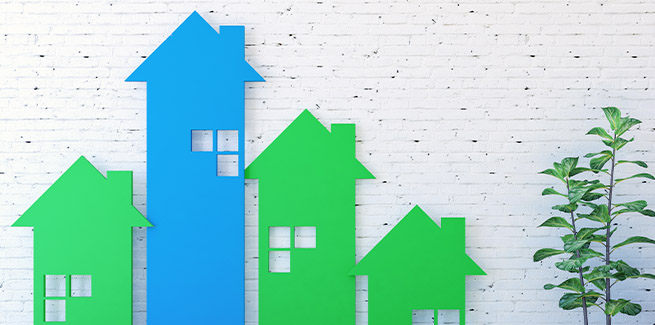Property research group CoreLogic’s Pain and Gain report for the December 2020 quarter has revealed an increase in the profitability of real estate, with 89.9 per cent of transactions resulting in a nominal gain for sellers.
The latest edition of the report – for which CoreLogic analysed around 98,000 resales of residential property that occurred in the three months to December 2020 – found that the rate of profit-making resales in the December quarter rose from 88.3 per cent in the three months to June.
Furthermore, the profitability of dwelling sales has exceeded pre-coronavirus pandemic levels, when the rate of profit-making sales was 87.9 per cent in the three months to February, according to CoreLogic.
The figures also showed that total gains from resales in the December quarter rose to $31.9 billion, up from $24.8 billion in the previous quarter, while combined losses from resales also decreased from $1.2 billion to $1 billion from the September to December quarter.
The report added that the increase in profitability has coincided with a 2.3 per cent spike in dwelling values nationally in the three months to December 2020, compared with a 1.1 per cent decline in values through the September quarter.
Explaining the rise in values, the report said: “The rapid increase in Australian dwellings values is largely a reflection of increased demand off the back of a 15 bps reduction in the cash rate through November, and a strong trend towards a recovery in economic conditions, particularly in Victoria, which makes up a large portion of the Australian economy, and saw a 6.8 per cent increase in state final demand in the three months to December.”
Indeed, as the 112-day lockdown was lifted across Melbourne from the end of October, sales and listings activity increased across Australia in the December 2020 quarter, while dwelling values rose as a quick economic recovery boosted consumer confidence, the report said.
It stated that as per CoreLogic’s estimates, sales volumes increased 23.6 per cent through the December 2020 quarter on the three months to September, while December quarter sales volumes were 20.4 per cent above the five-year average.
“This means that proportion of loss-making sales has fallen against larger sales volumes,” the report said.
Across the capital city markets, Hobart had the highest incidence of profit-making sales, at 97.2 per cent, up from 96.7 per cent in the September quarter.
However, the lowest incidence of profit-making sales was in Darwin, where over half of all properties (51.4 per cent) sold for a loss, according to CoreLogic’s report.
It also stated that the rate of loss-making sales across Darwin was 48.6 per cent, which, while a high level, has fallen from 50.6 per cent in the September quarter.
Across Greater Melbourne, the rate of profit-making sales increased markedly, from 93.0 per cent in the three months to September 2020 to 94.3 per cent over the three months to December 2020.
According to the report, this mirrored a shift in Melbourne’s dwelling values as the city emerged from COVID-19-related lockdowns, with values increasing by 1.5 per cent.
The rate of profit-making house sales reached the highest level of profitability since the June 2018 quarter, according to CoreLogic.
Profitability rose across both houses and units across Australia, with the portion of houses sold at a loss falling from 9.3 per cent in the September 2020 quarter to 7.3 per cent in the December 2020 quarter, while the portion of loss-making unit sales fell from 19.6 per cent to 18.7 per cent.
The report showed, however, that units were around two-and-a-half times more likely to sell at a loss than houses in the December 2020 quarter.
“The differential between house and unit profitability increased to 11.3 percentage points in the December quarter, up from 10.2 percentage points in the three months to September,” the report said.
“The increased differential was a result of house profitability rising faster (at two percentage points) than units (which increased 90 basis points).”
The report stated that a spike in owner-occupier and first home buyer activity may have driven the relatively strong price performance and profitability across houses.
“At least anecdotally, demand for houses has been compounded by a desire for more remote locations to live, and low-density living preferences throughout the pandemic,” the report said.
The figures revealed that over the December 2020 quarter, owner-occupiers had a higher incidence of profit-making sales than investors, with owner-occupiers seeing a profit on 92.2 per cent of resales, compared with 84.9 per cent among investors.
The report also said that in regional Australia, five of the nine regions measured saw a profit on about 95 per cent of the sales through the December quarter.
Commenting on the report, CoreLogic’s head of research Australia said: “As property values rose across each state and territory through the December quarter, buoyed by a cash rate reduction through November, the value of profits also increased substantially.
“The results are particularly significant given the uplift in sales volumes in the three months to December, much of which was driven by an increase in transaction activity across Melbourne.
“Sales and listings increased remarkably across the city, as the economy emerged from the weakness associated with the extended lockdowns.”
[Related: Auction volumes highest since April 2020]
 ;
;
